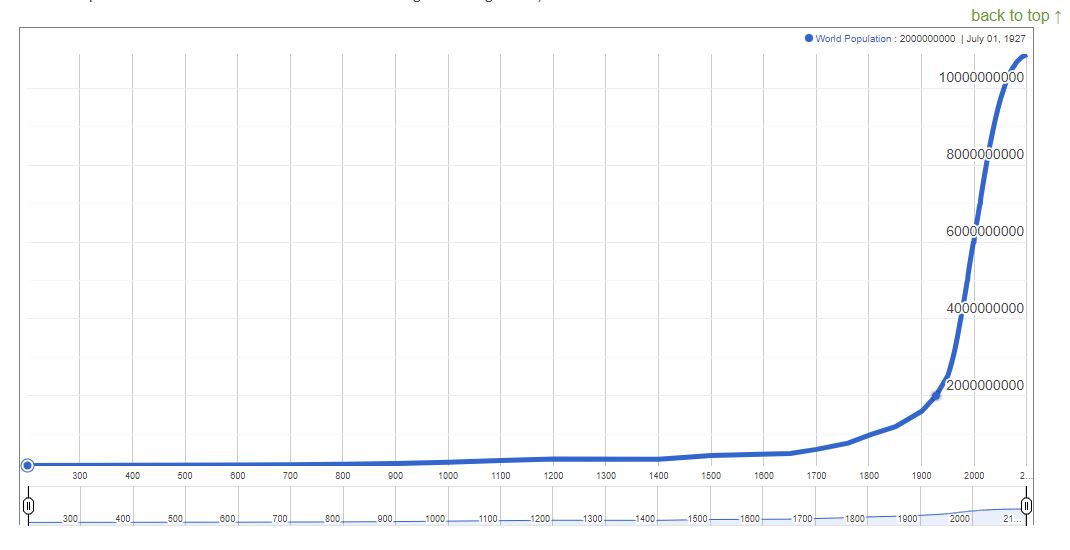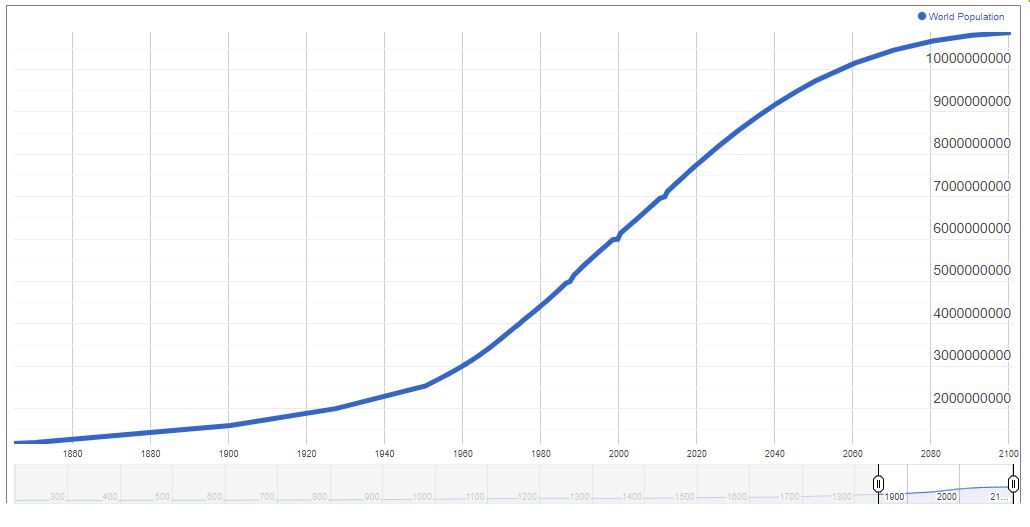Demographics
Overall there are a few common threads.
In most countries there is a growing percentage of the population living in an urban environment at the expense of rural choices. This places a large demand for public transport and accounts for significant pollution. These urban centres are dependent on efficient supply chains for essentials such as food and water.
In addition, over many decades, the population is aging which brings with it a growing demand on community resources.
Real time counters and graphs of the World Population can be found at the WorldOMeter site. The material here is taken from that site with the second graph and Footnote added
.

At the dawn of agriculture, about 8000 B.C., the population of the world was approximately 5 million. Over the 8,000-year period up to 1 A.D. it grew to 200 million (some estimate 300 million or even 600, suggesting how imprecise population estimates of early historical periods can be), with a growth rate of under 0.05% per year.
A tremendous change occurred with the industrial revolution: whereas it had taken all of human history until around 1800 for world population to reach one billion, the second billion was achieved in only 130 years (1930), the third billion in 30 years (1960), the fourth billion in 15 years (1974), and the fifth billion in only 13 years (1987).
- During the 20th century alone, the population in the world has grown from 1.65 billion to 6 billion.
- In 1970, there were roughly half as many people in the world as there are now.
- Because of declining growth rates, it will now take over 200 years to double again.
Expanding the graph to depict the past 140 years is given below:

Footnote: There is a slowing of growth rates from 2000-2020 period but will it be too little too late - coupled with other factors - to combat the climate change goals?
Interestingly, the shape of the curve from 1880 to 2100 is very similar to that in the header image on this site which was conceived as representing two things - firstly, the spread of Covid-19 to the point at which it reached a plateau, and secondly a concept of how the global temperatures might rise until perhaps its effects dramatically reduced the world population.
- Details
